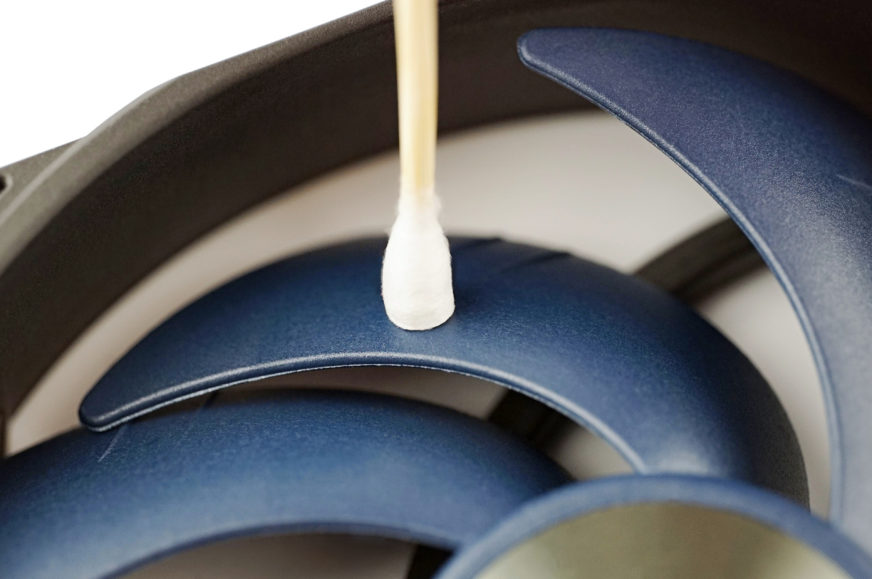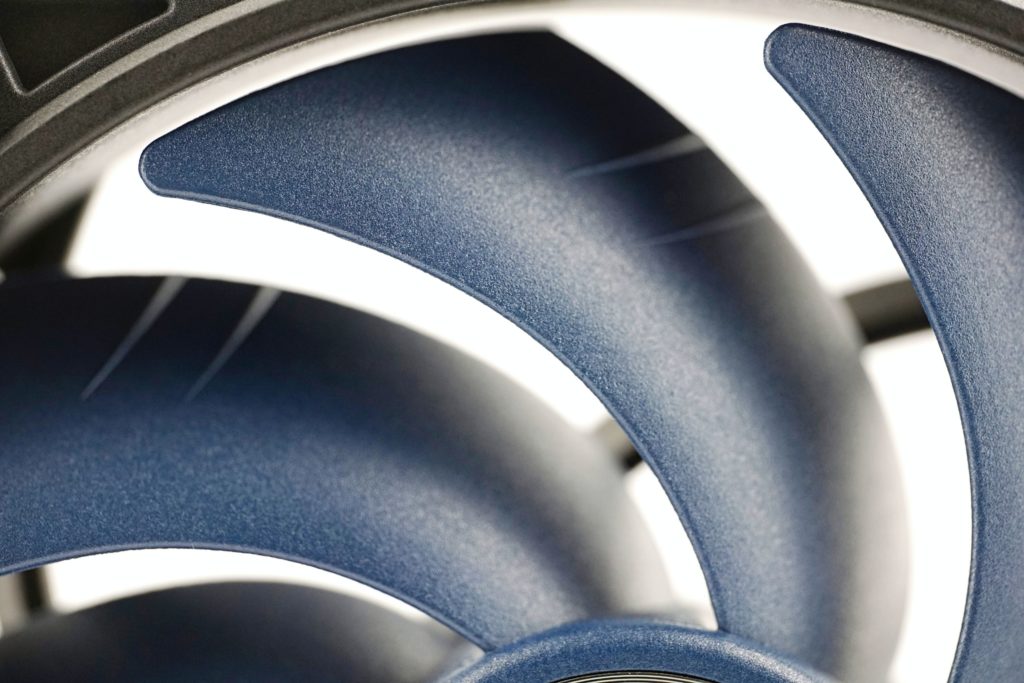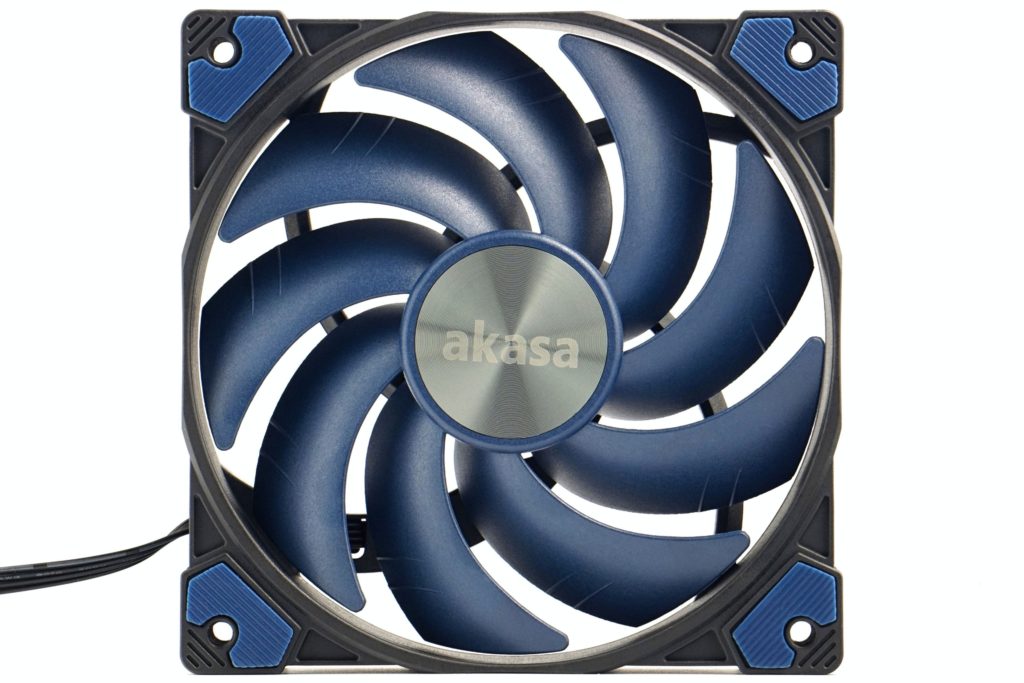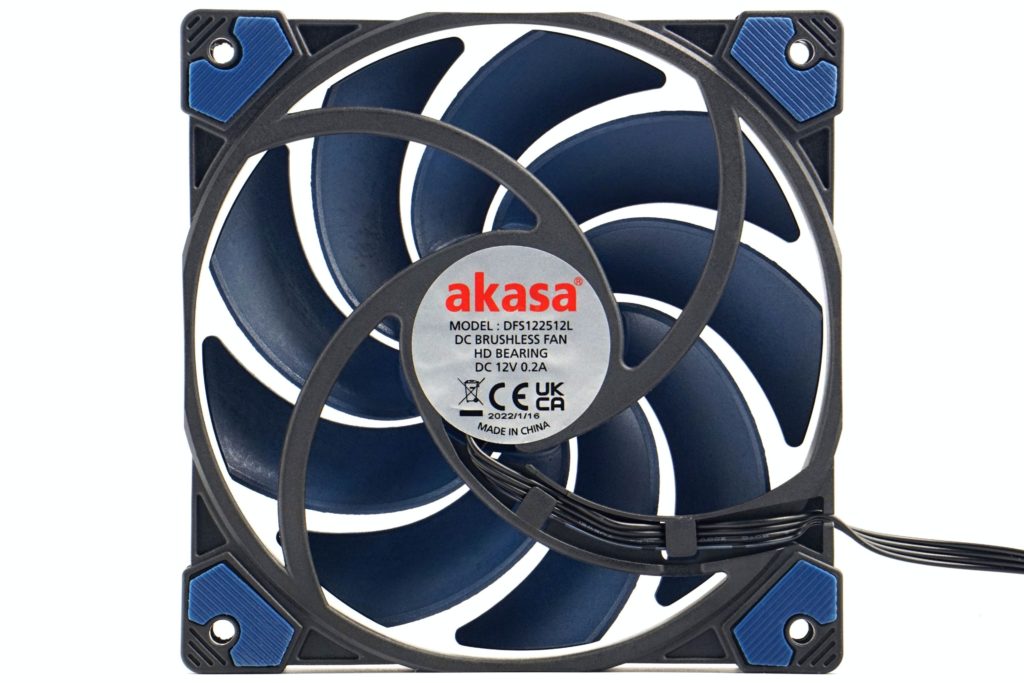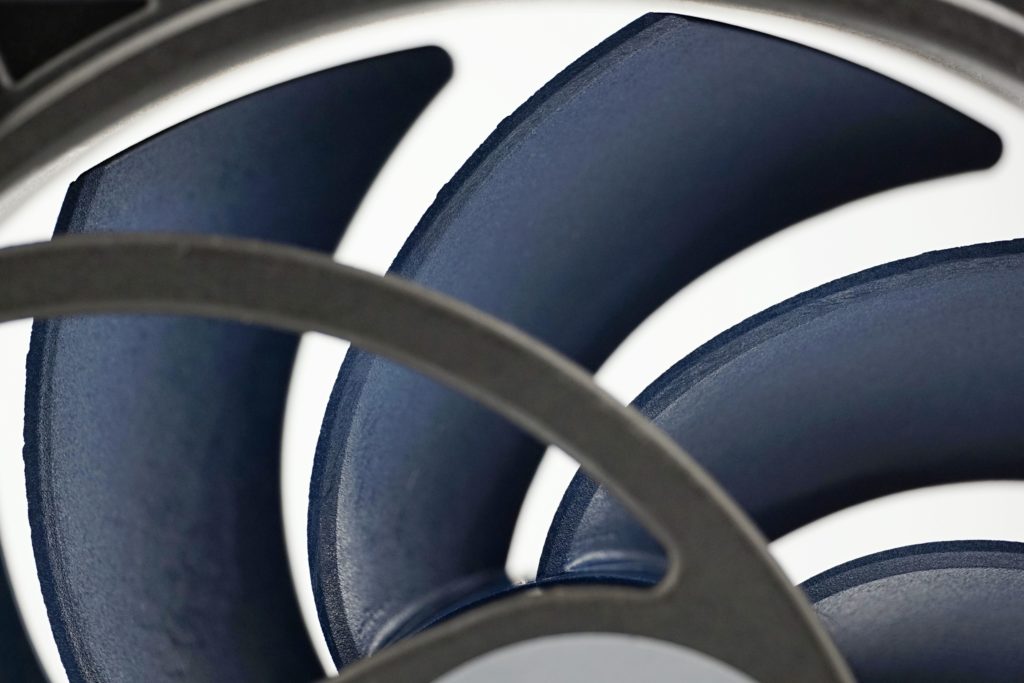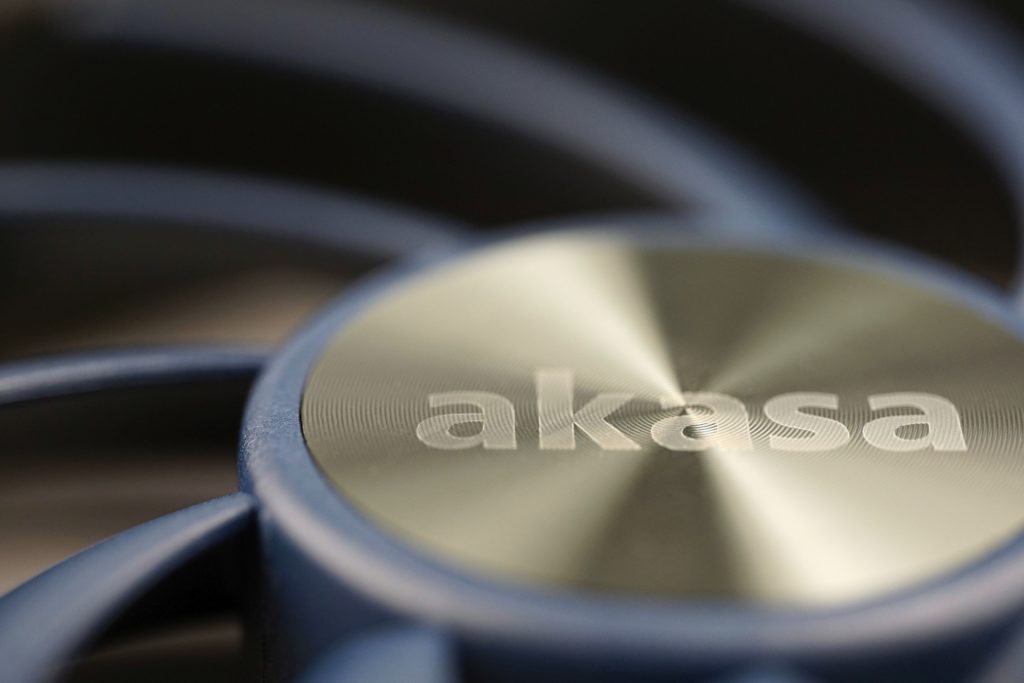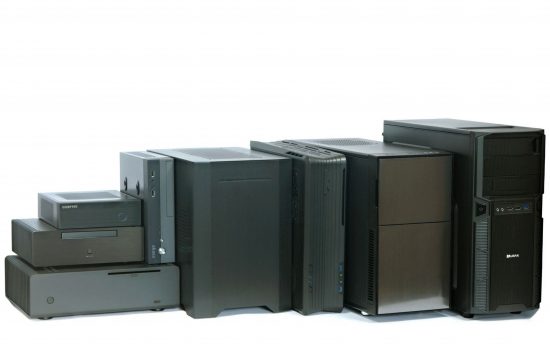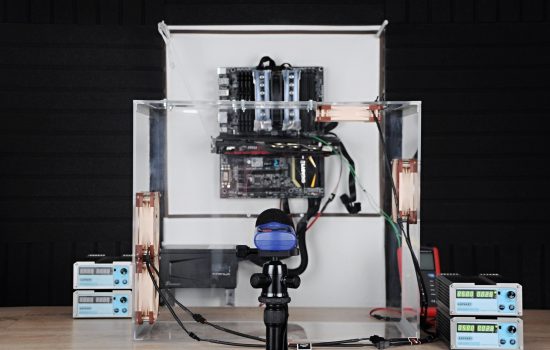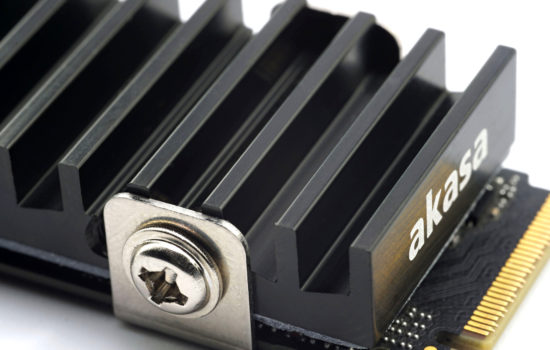Akasa Alucia SC12 in detail
Few fans can wow us at first glance the way the Alucia SC12 from Akasa has done. Its build looks quite compelling in this price range. However, on a second look after detailed testing comes some sobering. But even though the high (even exorbitantly high) expectations have not been met, in some aspects the Alucia SC12 beats attractive, similarly cheap competitors in some situations.
Giving in to the impression from illustrations is often deceptive, especially with fans. We’ve explained many times in fan tests why manufacturers resort to narrower blades with more pronounced curved edges than those of “traditional” rotors. The ones that clearly dominated the fan market just a few years ago. But now rotors with typically wider blades and straighter leading edges are in decline and will increasingly disappear.
The reason for the statement above is that rotor designs from earlier eras cannot compete in efficiency with modern ones, whose era among computer fans was started by Scythe with the Gentle Typhoon. That’s because the air is significantly more “twisted” and guided in the axial direction. This means, for example, that there is less friction underneath the fan tunnel arch and quieter operation can be achieved with the same airflow.
No, we are not saying that all older fans (with traditional rotor shape) must be automatically less efficient than the “new” ones. We are just talking about better predispositions and less physical limitations. Naturally, the final results also depend strongly on the qualitative characteristics of the materials used. And here we can transition to the analysis of the specific elements of the Akasa Alucia SC12 (AK-FN117) fan.
Compared to many fans with a similar rotor shape, the Alucia SC12 has a significantly smaller motor housing. Up to 40 % compared to the BeQuiet! Silent Wings (Pro) 4. A smaller surface area in these locations naturally means a larger cross-section in which the blades operate. But this is at the expense of a more wobbly rotor fit. The rotor is also made of a material with very low rigidity, which, combined with the relatively long and narrow blades, does not do it any favours.
To give you a better idea of how flexible the Alucia SC12 blades are we have an illustration with a thin cotton swab. Even its delicate structure is enough to bend the blade when you push on its centre so that the tip touches the blade next to it. Now imagine how it behaves in flight.
It’s one thing what shape the rotor is in a static position (that’s relatively unimportant) and another (that’s the important thing) what happens to the blades when they get into motion. Due to the effect of undulation, the operating shape is suddenly different, which, apart from vibration, naturally has a particular effect on performance characteristics. Measuring the details around what the gap is between the blade tips and the frame in the static position is an irrelevant indicator when, in practice, the blades are unstable in these (and to a different degree for each fan).
In the case of the Alucia SC12, due to the high thermally expansive material, deformations occur over a larger area than in the vast majority of competing fans with a similar shape. The SilentiumPC Fluctus 120 PWM has significantly more stable blades despite a slightly smaller thickness. It would be really interesting to know what the rotor of these Akasa fans is made of.
There are two more details on the blades that are worth noting. There are two protrusions on the trailing edges to suppress microturbulence at the intake, which increases the amount of air that flows through the rotor while reducing noise. This is praiseworthy. What Akaka hasn’t been so particular about, however, is the quality of the mould in which the Alucia SC12 rotors are created. It’s easy to see in the small bumps on the edges of the blades. As a result of these, the rotor balance is naturally worse.
Of course, one could argue that we are in the lower end and something has to be saved on, but for example such Noctua NF-P12-redux is a clear proof that it is possible to produce a fan with top-notch manufacturing precision for this money. This is, after all, one of the fans that is a direct competitor to the Alucia SC12 similar to the already mentioned SPC Fluctus 120 PWM and when comparing the results, also look at the BeQuiet! Pure Wings 2. All of these fans are attractive for some application and are close in price.
| Brand and model of fan | Paper specicifations * | Price [EUR] | ||||||||
| Format (and thickness) in mm | Connecting | Speed [rpm] | Airflow [m3/h] | Static pressure [mm H2O] | Noise level [dBA] | Bearings | MTBF [h] | |||
| Motor | RGB LED | |||||||||
| Akasa Alucia SC12 | 120 (25) | 4-pin (PWM) | N/A | 500–2000 | 95.65 | 1.94 | 33.1 | hydrodynamic | N/A | 12 |
| BeQuiet! Silent Wings Pro 4 (BL098) | 120 (25) | 4-pin (PWM) | N/A | 3000 | 142.50 | 5.31 | 36.9 | fluid | 300 000 | 32 |
| Thermalright X-Silent 120 | 120 (25) | 3-pin (DC) | N/A | 1000 | 61.31 | N/A | 19.6 | fluid | 50 000 | 5 |
| Fractal Design Aspect 12 RGB PWM | 120 (25) | 4-pin (PWM) | 3-pin (5 V) | 500–2000 | 22.09–95.14 | 0.23–2.34 | 10.0–33.2 | rifle | 90 000 | 16 |
| BeQuiet! Silent Wings 3 (BL066) | 120 (25) | 4-pin (PWM) | N/A | 1450 | 85.80 | 1.79 | 16.4 | fluid | 300 000 | 21 |
| Gelid Zodiac | 120 (25) | 4-pin (PWM) | 3-pin (5 V) | 700–1600 | 111.29 | 1.47 | 35.0 | hydrodynamic | N/A | 10 |
| Fractal Design Dynamic X2 GP-12 PWM | 120 (25) | 4-pin (PWM) | N/A | 500–2000 | 148.83 | 0.51–2.30 | 10.0–32.2 | rifle | 100 000 | 12 |
| BeQuiet! Pure Wings 2 (BL039) | 120 (25) | 4-pin (PWM) | N/A | 1500 | 87.00 | 1.25 | 19.2 | rifle | 80 000 | 11 |
| Gigabyte Aorus 120 ARGB | 120 (25) | 4-pin (PWM) | 3-pin (5 V) | 800–1700 | 31.47–69.40 | 0.37–1.48 | 7.3–28.6 | sleeve | 73 500 | 25 |
| Arctic BioniX P120 A-RGB | 120 (30) | 4-pin (PWM) | 3-pin (5 V) | 400–2300 | 81.55 | 2.10 | 33.4 | fluid | N/A | 21 |
| Akasa OTTO SF12 | 120 (25) | 4-pin (PWM) | N/A | 0–2000 | 164.84 | 3.59 | 7.1–31.7 | ball | 80 000 | 22 |
| Cooler Master SickleFlow 120 ARGB | 120 (25) | 4-pin (PWM) | 3-pin (5 V) | 680–1800 | 105.34 | 2.50 | 8.0–27.0 | rifle | 160 000 | 15 |
| Alphacool SL-15 PWM | 120 (15) | 4-pin (PWM) | N/A | 600–1800 | 71.40 | 1.20 | 32.0 | ball | 50 000 | 11 |
| Arctic BioniX F120 | 120 (25) | 4-pin (PWM) | N/A | 200–1800 | 117.00 | 2.10 | 20.0 | fluid | N/A | 10 |
| SilverStone SST-AP123 | 120 (25) | 3-pin (DC) | N/A | 1500 | 96.84 | 1.46 | 23.8 | fluid | 50 000 | 25 |
| Noctua NF-P12 redux-1700 PWM | 120 (25) | 4-pin (PWM) | N/A | 400–1700 | 120.20 | 2.83 | 25.1 | SSO | 150 000 | 13 |
| SilentiumPC Fluctus 120 PWM | 120 (25) | 4-pin (PWM) | N/A | 300–1800 | N/A | N/A | N/A | fluid | 100 000 | 12 |
| MSI MEG Silent Gale P12 | 120 (25) | 4-pin (PWM) | N/A | 0–2000 | 95.48 | 2.21 | 22.7 | hydrodynamic | 50 000 | 31 |
| Asus ROG Strix XF120 | 120 (25) | 4-pin (PWM) | N/A | 1800 | 106.19 | 3.07 | 22.5 | „MagLev“ | 400 000 | 23 |
| Akasa Vegas X7 | 120 (25) | 4-pin (PWM) | 4-pin (12 V) | 1200 | 71.19 | N/A | 23.2 | fluid | 40 000 | 11 |
| Reeven Coldwing 12 | 120 (25) | 4-pin (PWM) | N/A | 300–1500 | 37.54–112.64 | 0.17–1.65 | 6.5–30.4 | sleeve | 30 000 | 12 |
| Reeven Kiran | 120 (25) | 4-pin (PWM) | shared | 400–1500 | 110.10 | 2.95 | 33.6 | fluid | 120 000 | 17 |
| SilentiumPC Sigma Pro 120 PWM | 120 (25) | 4-pin (PWM) | N/A | 500–1600 | 79.00 | N/A | 15.0 | hydraulic | 50 000 | 7 |
| SilentiumPC Sigma Pro Corona RGB 120 | 120 (25) | 4-pin (PWM) | 4-pin (12 V) | 1500 | 56.58 | N/A | N/A | hydraulic | 50 000 | 12 |
| SilverStone SST-AP121 | 120 (25) | 3-pin (DC) | N/A | 1500 | 60.08 | 1.71 | 22.4 | fluid | 50 000 | 18 |
| SilverStone SST-FQ121 | 120 (25) | 7-pin (PWM) | N/A | 1000–1800 | 114.68 | 0.54–1.82 | 16.4–24.0 | fluid | 150 000 | 20 |
| Xigmatek XLF-F1256 | 120 (25) | 3-pin (DC) | N/A | 1500 | 103.64 | N/A | 20.0 | rifle | 50 000 | 16 |
* When reading performance values, a certain amount of tolerance must always be taken into account. For maximum speeds, ±10 % is usually quoted, minimum speeds can vary considerably more from piece to piece, sometimes manufacturers will overlap by as much as ±50 %. This must then also be adequately taken into account for air flow, static pressure and noise levels. If only one value is given in a table entry, this means that it always refers to the situation at maximum speed, which is achieved at 12 V or 100 % PWM intensity. The manufacturer does not disclose the lower limit of the performance specifications in its materials in that case. The price in the last column is always approximate.
- Contents
- Akasa Alucia SC12 in detail
- The basis of the methodology, the wind tunnel
- Mounting and vibration measurement
- Initial warm-up and speed recording
- Base 7 equal noise levels…
- .. and sound color (frequency characteristic)
- Static pressure measurement…
- … and airflow
- Everything changes with obstacles
- How we measure power draw and motor power
- Measuring the intensity (and power draw) of lighting
- Results: Speed
- Results: Airlow w/o obstacles
- Results: Airflow through a nylon filter
- Results: Airflow through a plastic filter
- Results: Airflow through a hexagonal grille
- Results: Airflow through a thinner radiator
- Results: Airflow through a thicker radiator
- Results: Static pressure w/o obstacles
- Results: Static pressure through a nylon filter
- Results: Static pressure through a plastic filter
- Results: Static pressure through a hexagonal grille
- Results: Static pressure through a thinner radiator
- Results: Static pressure through a thicker radiator
- Results: Static pressure, efficiency by orientation
- Reality vs. specifications
- Results: Frequency response of sound w/o obstacles
- Results: Frequency response of sound with a dust filter
- Results: Frequency response of sound with a hexagonal grille
- Results: Frequency response of sound with a radiator
- Results: Vibration, in total (3D vector length)
- Results: Vibration, X-axis
- Results: Vibration, Y-axis
- Results: Vibration, Z-axis
- Results: Power draw (and motor power)
- Results: Cooling performance per watt, airflow
- Results: Cooling performance per watt, static pressure
- Airflow per euro
- Static pressure per euro
- Results: Lighting – LED luminance and power draw
- Results: LED to motor power draw ratio
- Evaluation





